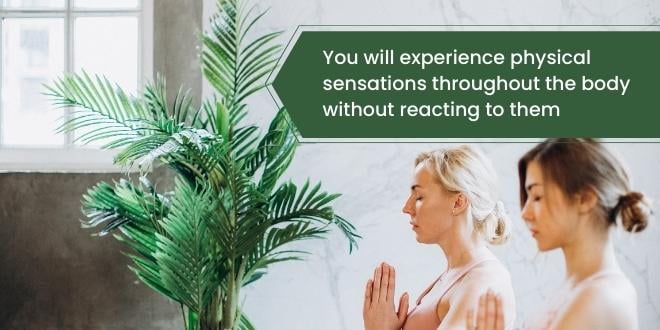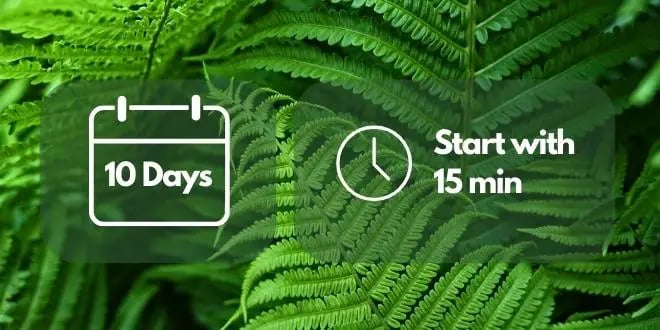Meditation
Vipassana Meditation
When we think of meditation, we often think of having clarity of the mind. We believe that meditation can wipe away all our worries and bring us peace of mind. True that meditation can give us clarity of the mind. And it is also true that it can also bring us peace of mind. But one form of meditation teaches our minds to feel what is happening and acknowledge things as they happen. Vipassana meditation gives us awareness of what is happening as it happens. As you read along, you will realize how this form of mindful meditation can bring peace of mind and teach you the value of acceptance.
What exactly is Vipassana Meditation?
Vipassana meditation is one of the oldest meditation techniques in India. It has been practiced in India for over 2500 years that aims to liberate the mind from suffering. But can we eliminate suffering in our lives? No. We cannot avoid suffering but what Vipassana meditation teaches us is how to deal with these sufferings.
Vipassana is a Pali word that is translated as “clear-seeing” and “insight”. Vipassana meditation is a mindful meditation that gives us awareness of exactly what is happening as it happens. An example of this practice is mindfulness of breathing. Through this simple exercise, you become aware of the simple task of breathing. If you inhale long, then you will notice that you inhale long. If you exhale short, then you will notice that you exhale short. This is a very simple activity that gives you awareness of your breathing as it happens.
What happens during Vipassana Meditation?

During a Vipassana meditation session, you will experience physical sensations throughout the body without reacting to them. Imagine sitting in your meditation room for hours and feeling your legs getting numb. Your mind will scan your body of all the sensations that it feels, whether it is your legs getting numb or your shoulders feeling heavy. Your mind will acknowledge these sensations but will only let them pass. Letting these sensations pass is easier said than done. It is a gradual process that takes years of Vipassana meditation practice and discipline. It is an effective meditation technique
Vipassana Meditation technique
Vipassana meditation can also be done at home. Start with a simple 15-minute meditation in the morning for 10 days and see for yourself the difference that it can do to your mind. Here are some steps on how you can start this meditation at your home.

- Find a peaceful and comfortable place in your room. It is recommended that you do this in the morning as you start your day.
- Sit on a comfortable mat with your legs crossed. Sit up right and relax your body.
- Close your eyes and breath normally. Focus on your breathing as you exhale and inhale.
- Observe your thoughts as you breathe. Acknowledge them and let them pass. Do not make any judgment on your thoughts.
- Scan your body to feel the sensation from your head, arms, torso, leg and feet. Acknowledge every single sensation without reacting and just let them pass.
- Welcome other distractions around you and acknowledge them. Do not react and simply go back to your breathing.
Do this simple breathing meditation for 15 minutes a day and slowly increase as you get better with your focus.
For beginners, if you have no idea where to start, there are online Vipassana meditations that you can find on the internet. You can download apps that can help you with your meditation and can guide you as you go. Although there are available resources online, it is still highly recommended to attend Vipassana meditations with a teacher. Vipassana meditation if not done properly can lead to depression, especially for those with pre-existing medical conditions.
What are the 5 precepts of Vipassana meditation?
There are 5 precepts of Vispanna meditation:
- To abstain from killing
- To abstain from stealing
- To abstain from sexual activity
- To abstain from telling lies
- To abstain from intoxication
These 5 precepts all aim for morality. The premise of these 5 precepts is that to continue with the 8 Noble paths, you need to have a strong morality. It will be difficult to find enlightenment and liberation if you do not have a strong sense of morality. These 5 precepts are also applicable in our everyday life.
Following these 5 precepts will make us better human beings, that can bring us closer to enlightenment and liberation from suffering.
How is Vipassana meditation different from the other meditations?
There are 2 different types of Buddhist meditation. The Samatha meditation aims to develop mental strength and freedom from restlessness. This kind of meditation brings about calmness, clarity of the mind and inner strength. The second type of Buddhist meditation is the Vipassana meditation which deals with insight. Vipassana “insight” meditation gives awareness to what is happening as it happens. It aims to liberate us from suffering. With this meditation technique, Vipassana meditation, we are taught the ability to acknowledge things, whether good or bad as it happens and allows us to let go and move on.
What happens at a 10-day vipassana silent retreat?
There are many different centers that offer Vipassana silent retreats. One of them is the Vipassana Research Institute which includes S. N. Goenka was one of its teachers. This institute stays true to the Vipassana meditation science, no matter how difficult it may be for the practitioners. Although S. N. Goenka has left the world, he made his mark in the institute and the world. He shared the teachings that he learned from his encounter with the great Vipassana teacher Sayagyi in Myanmar. On a 10-day Vipassana silent retreat, you will learn how this meditation technique helps you accept things in life, both positive and negative, and be at peace with them.
On a 10-day silent retreat, most times of the day are spent doing meditation. It can be individual meditation or group meditation. With some minutes dedicated to eating time and lectures. The day will start at 4:00 am and end at around 10:00 pm. And since this is a silent retreat, nobody is allowed to talk to another student, make gestures and communicate through writing. This is the first taste of “Noble Silence”. Here is a quick rundown of the activities that happen on a 10-day Vipassana silent retreat.
Day 1
For many beginners or first-time students, day 1 will be the hardest. This is the time when your body will be subjected to a series of long silent meditations. The day starts at 4:00 a.m when the gong is played to wake up everybody. By 4:30 a.m, every participant should be at the meditation hall to start their first of the many meditations throughout the day.
Day 2 and 3
Day 2 is similar to day 1. The day starts early at 4:00 am and ends at 10:00 pm. The whole day is filled with meditations with breaks for simple meals and lectures. The only difference is that the body is starting to adapt and recognize meditation. Although it is still far from mastering the art of staying still while the body is not at ease. Breathing meditation is the main focus of the first three days.
Day 4
Vipassana meditation is introduced. The long body scan is introduced and done in a systematic order. This is the time when the students are thought to do “long hours of strong determination”. It is a form of meditation where the student is not allowed to move despite all the numbing sensation and pain that the body is feeling. The aim is to observe the pain and acknowledge that this pain is only temporary.
Day 5 to day 8
The long hours of strong meditations are still the activity of the day. With occasional Q&A sessions with the meditation teacher. By this time, the students are more adjusted. But it can also be said that during this time, students are also starting to give up. Some students may also break the “Noble silence”. And that is absolutely fine. Vipassana meditation is not meant to be easy. Vipassana meditation involves strong focus and a strong state of mind.
Day 9
By this time, the students are starting to understand and appreciate the value of Vipassana meditation. Although it is still far from being over, the students who survive 9 days of the silent retreat can feel more calm and collected. The grueling pain of long hours of strong meditations does not bother them anymore. And the effect of the vipassana meditation starts to manifest in how they see things around them.
Day 10
After the morning meditations, the students are allowed to break the Noble Silence and enter the phase of Noble Speech. This can be compared to a “soothing balm to help heal our wounds after doing surgery on our minds” explains Vipassana meditation teacher S. N. Goenka. Some students may experience the body “dissolve” while some students may not reach this experience. But that is alright. Each student has a different state of mind and struggle.
Takeaways from a 10-day silent retreat
- You will realize that everything shall pass. As the saying goes, “this too shall pass”. Vipassana meditation teaches the mind to acknowledge the pain that we feel and let them go. Nothing in this life is permanent, even the joy, pain and suffering that we are experiencing.
- We cannot find happiness in meditation. Meditation is not a cure-all for any sickness in the world. But what Vipassana meditation does is that it helps us to be calm and have the clarity of mind to accept things as they are. If we learn to accept things as they are, we learn not to overthink and to make the best judgment which leads to less stress.
- The effect of Vipassana meditation will not happen overnight or over a 10-day silent retreat. Vipassana meditation is a practice that takes a year. Vipassana meditation may calm the mind for the moment but with the fast pace of our lives, we can easily fall back into stress and a cluttered mind. It takes constant practice.
- Vipassana will not change our lives. It is only a tool to gain more mastery and control of your thoughts and emotions. Once you learn to control your negative thoughts and feelings, you will then have a more positive outlook on life.
Frequently Asked Question
Is Vipassana good for depression?
Vipassana can reduce the severity of depression. But be careful. Vipassana if not done properly can induce depression. If you have any mental illness, better consult your doctor before attending Vipassana meditation.
Who should not do Vipassana?
Those with chronic mental illness should consult a doctor before attending a Vipassana meditation course.
Can you talk in Vipassana?
Vipassana silent retreat practices “Noble Silence”. This means that any interaction, verbal, hand gestures and sign language are not allowed.
What is the right age for Vipassana meditation?
You have to be 18 years old and above to attend a Vipassana meditation. But there are Vipassana meditation classes that are tailored for 13 to 17-year-olds.
What is the difference between Vipassana and meditation?
Meditation usually aims to calm and balance the mind and the body. While Vipassana meditation aims to give us awareness of the things that are happening as they happen.
Will you recommend Vipassana to everyone?
Vipassana is not an easy form of meditation. It challenges your endurance and your discipline. But it can be a valuable experience for those who would like to try it.

